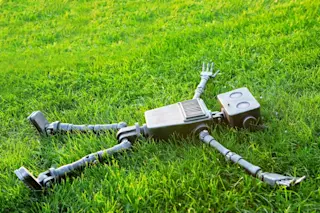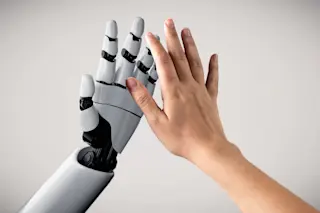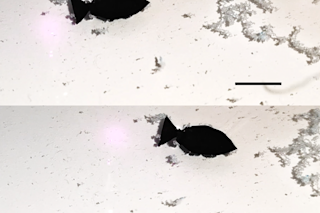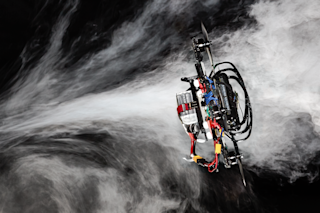Unlike human arms, which move simply by contracting and relaxing muscles, robotic arms use gears, hydraulics, and other expensive, heavy, power-hungry parts. In spaceowhere robots will carry out sample collection and repairs in many nasa-planned missionsosuch complexity becomes a problem. Heavy items cost more to launch, and power supplies are limited on space probes. All this motivated Yoseph Bar-Cohen to try to make a better robot. And he may have succeeded. He has created artificial muscles that quickly respond to small amounts of electricity by lengthening or bending, almost like the real thing.
Bar-Cohen, a physicist at Caltech's Jet Propulsion Laboratory, has made two different types of artificial muscles. The first works as the muscle in a robotic hand. The muscle is a flexible polymer ribbon constructed from chains of carbon, fluorine, and oxygen molecules. When Bar-Cohen applies an electric charge to one side of the ribbon, charged particles in ...














